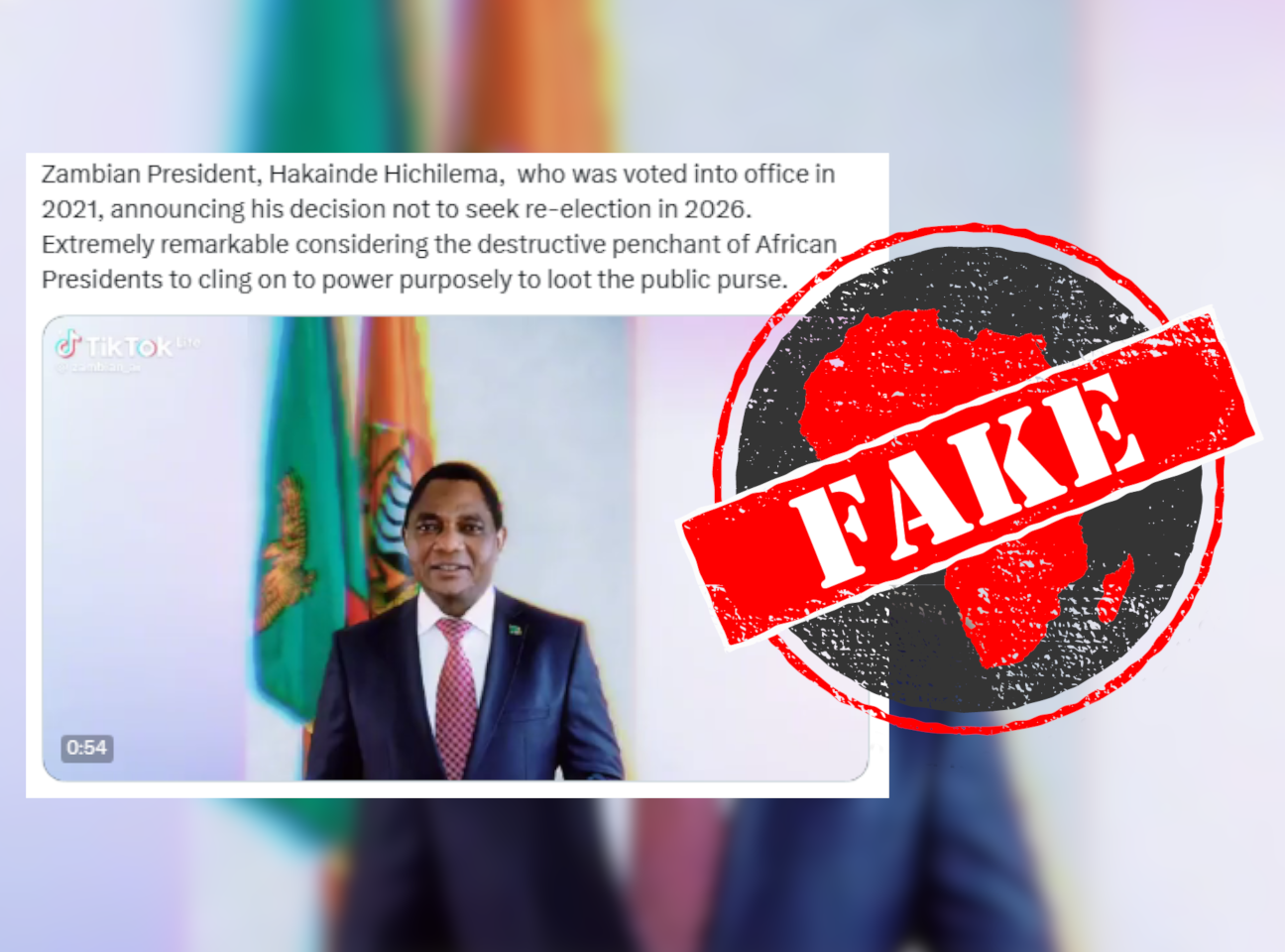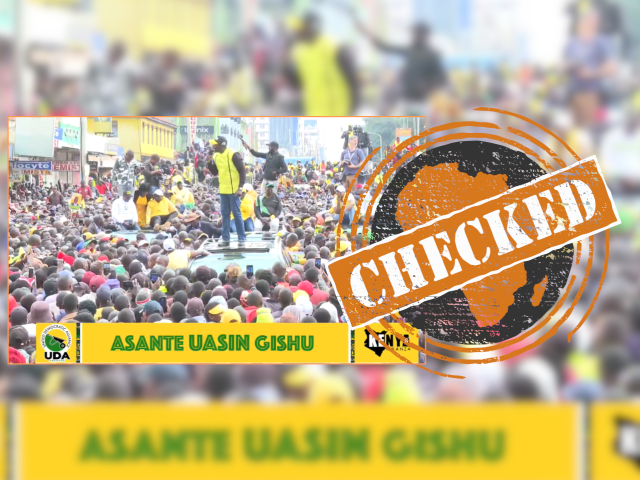IN SHORT: The video was fabricated using artificial intelligence, and has been debunked by multiple experts. The country’s ruling party also confirmed it was a fake, and Zambian police launched an investigation into the video’s creator. The president has not made any announcement that he will not run in the 2026 election.
Posts circulating on social media in October 2023 claim to show a video of Zambian president Hakainde Hichilema announcing that he will not run for re-election.
Zambia next goes to the polls in 2026. Hichilema has been in power since 2021, when his United Party for National Development (UPND) won a landslide election against then-president Edgar Lungu.
One version of the claim was posted by an account on social media platform X, formerly Twitter, that appeared to be linked to Ghanaian politician Samuel Koku Anyidoho. It received more than 5,000 views.
The video was also posted on Facebook here and here, on X here, here and here, and on YouTube here, here and here.
But not all viewers were convinced, with many comments calling the video “fake”. We looked into its authenticity and here’s what we found.

Video debunked by various fact-checking organisations
Some versions of the video circulating on social media include a watermark linking to a TikTok account, @zambian_ai. This account has posted a handful of videos seemingly showing Zambian politicians, though the one doing the rounds on other social media platforms, which had been played over 77,000 times, appears to have been deleted.
In the video, Hichilema appears to say: “It is with the utmost sincerity and a profound sense of duty to our great nation that I announce my decision to not seek re-election in the upcoming general elections of 2026.”
He goes on: “I believe this decision is in the best interests of our country and its future.”
But whatever resemblance the person in the video bears to the Zambian president, the footage is not authentic and has been digitally manipulated. Fact-checking organisations have published articles debunking the video, including AFP here and PesaCheck here. Other media outlets also weighed in, here, here, here and here.
Watch out for telltale signs of digital manipulation
As some commenters pointed out, there are visual clues that the video is fake. For example, only the president’s face appears to move in the video, with the rest of his body staying still. This is a clue that the video was made by generating an animated version of the face, overlaid onto a still image of the president. This was confirmed to AFP by experts in digital forensics.
These experts also noted that the human figure’s teeth are “misformed” in some frames, another sign that it has been fabricated. This is because “the mouth and teeth are synthesised to be consistent with an audio track”, digital forensics expert Hany Farid told AFP.
Other experts used specialised software to analyse the video and confirmed that it had been edited. They showed exactly which parts of the frame had been falsified and suggested that the editing of the video was not very advanced but had likely been done with easy-to-use tools, creating something more closely resembling a “cheap fake” than a true deepfake.
The Zambian police told AFP that they were “investigating the origin of the video”.
The secretary general of the UPND, Batuke Imenda, also said the video was fake in a statement posted to social media. He implied members of the opposition had created it. The president has not announced that he won’t run for re-election in 2026.
Read our guide on spotting AI-generated content online here. You can also learn more about the use of artificial intelligence in disinformation on our blog.
Republish our content for free
For publishers: what to do if your post is rated false
A fact-checker has rated your Facebook or Instagram post as “false”, “altered”, “partly false” or “missing context”. This could have serious consequences. What do you do?
Click on our guide for the steps you should follow.
Publishers guideAfrica Check teams up with Facebook
Africa Check is a partner in Meta's third-party fact-checking programme to help stop the spread of false information on social media.
The content we rate as “false” will be downgraded on Facebook and Instagram. This means fewer people will see it.
You can also help identify false information on Facebook. This guide explains how.





Add new comment